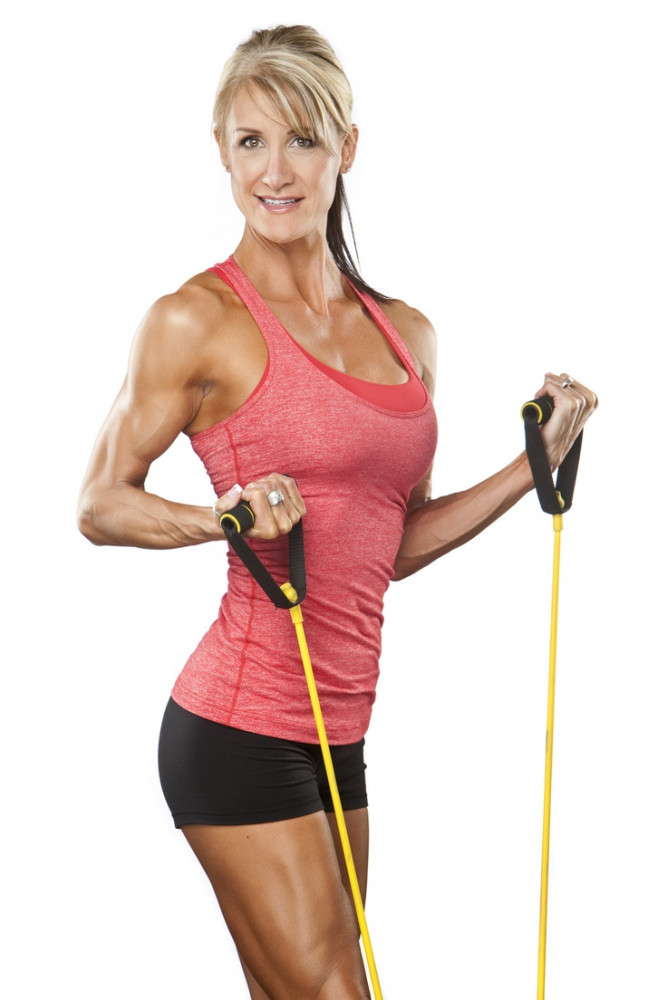MY OBSERVATIONS
In my workout career of over 60 years, I have often exercised alongside women. This was usually at co-ed public facilities. I have often discussed fitness topics with females and have been able to learn much in this manner. Our culture has changed over the years, though in earlier years I noted that:
- Women generally placed cardio over strength training in importance
- Dancing, aerobics classes, treadmills and swimming seemed more interesting than weight training
- Lighter weights and higher repetitions seemed more popular than more challenging weights
- Strength training for women seemed to be limited to machines, as opposed to free weights
- “Weight lifting can make me bulky” seemed to be a prevailing attitude
My observations were only anecdotal and many exceptions to the above generalities certainly existed. But most of what I have read (usually from female fitness practitioners) has also supported those observations in a general manner.
I have often wondered if many women were neglecting strength training in their workouts, though I could see that many others definitely were not.
These thoughts prompted this post, an attempt to emphasize strength training by weighted resistance for women

THE MYTHS
Ms. Courtney Brickner has much to say about the myths that we have heard over the years – those that relate directly to weight training for women. Paraphrasing Ms. Brickner:
- Lifting weights makes you bulky. Women have much less of the muscle building hormone testosterone than men and are highly unlikely to develop large muscles. They are far more likely to retain their feminine physiques. Also, weight lifting will build a stronger heart and drastically reduce the risk of heart attack or stroke. Risks of diabetes, osteoporosis and cancer are also lessened for both women and men.
- Lifting weights is a recipe for injury. Not true. Stronger muscles, tendons and bones are much less likely to break down. This prevents injury.
- Each muscle group must be worked individually. This is not mandatory. Compound exercises can be used to involve several muscle groups simultaneously. Squats, bench presses and dead lifts are examples. Compound exercises may also speed up the workout and save time.
Other similar myths:
- Fat may be reduced in specific areas. Untrue and ridiculous to believe this (unless we are using “cool sculpting” or other cosmetic surgery procedures). We are predisposed genetically to lose fat in order and throughout our bodies. We can not orchestrate fat loss in a certain spot only.
- Women must do cardio to lose weights. Actually, strength training for women is more efficient than cardio for weight loss. Building muscles will create a greater calorie expenditure and a longer “afterburn” after the workout, as our metabolism is fired up. This is not to say a great cardio program is not a very useful additive.
- One workout program will work for all women. Untrue, of course. If this were true, all female bodies would look alike and there would be no need for tailoring a program to specific needs or changing the routine periodically. So…be careful with the sameness of group programs.

THE WAKE FOREST STUDY
This study measured the effectiveness of resistance training with diet vs. cardio with diet for seniors who were over 60 and overweight. Weight loss and muscle loss were considered.
See my prior post for details of this study.
There was more fat loss from weight lifting and diet than from cardio and diet. Also, it was found that seniors lost more muscle mass by dieting and walking than by dieting alone. This firmly states the case for seniors to get into weight training, both women and men.
RESOURCES
(As an Amazon affiliate, I may earn from qualifying purchases). Here are some equipment choices from Amazon. The links are to specific items, but feel free to scroll around for other nearby options.
- Smaller dumbbells
- Adjustable dumbbells
- Resistance bands
- Paperback – “Strength Training Exercises for Women”
- Video – Home exercises for women (this video is by Jessica Smith. Note below a YouTube video, also by Jessica Smith).
Here is an excellent 30 – minute home dumbbell workout for women, as led by Jessica Smith. Nothing to buy here.
Other items to consider:
- Flat Tummy supplements, etc. for women
- FitTrack – measure 17 body metrics with the Dara scale
- Goli Apple Cider Vinegar Gummies
CONCLUDING
It seems to me that both men and women are alike in their desire to be fit and look as good as possible. We all differ in our levels of enthusiasm, commitment and free time. But mostly we seem to differ in the way we prioritize the time we have.
One important point – resistance training is not a contest to see who can handle the most weight. My practice is usually to start with resistance that allows me to perform 8 repetitions. I keep the same weight as I am able to move to 10 reps, then 12. As 12 reps become too comfortable, I move to a greater weight. This applies to dumbbells or barbells. Resistance bands and other equipment may require more repetitions, at least in my case.
What may be comfortable for me may be challenging for others and vice versa. The amount of resistance is not important except as a measure to apply to our individual needs at any time along our journeys of progress.
Please leave me any comments or questions in the “Comments” section below. Ladies especially, please let me know of your reaction to this. I hope I got a few things right, as I ventured into new territory. Or email me, richard@myworkoutathome.com.
Be well!

